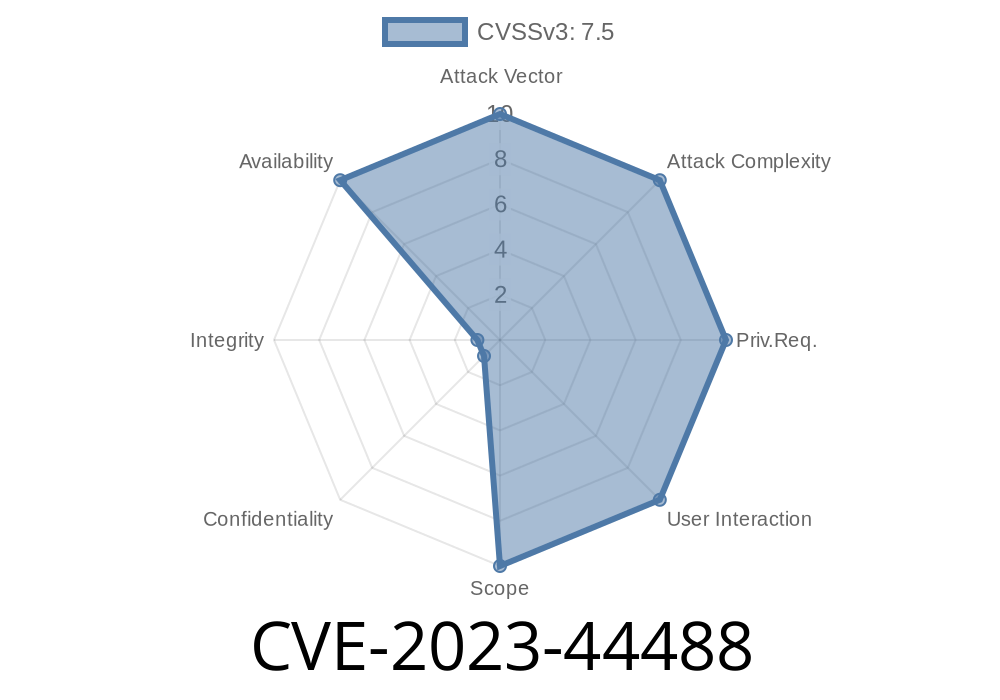In this long-read post, we will be discussing an issue recently found in the popular VP9 codec library, libvpx, identified by the Common Vulnerabilities and Exposures (CVE) number CVE-2023-44488. We will briefly explain what VP9 and libvpx are, then go into detail about the vulnerability, its impact, and potential exploitation including sharing code snippets. We will provide links to the original references documenting the issue and explain potential workarounds or measures that can be taken to mitigate the risk or impact of this vulnerability.
Overview of VP9 and libvpx
VP9 is a modern open-source video codec developed by Google, designed to offer high-quality video compression while aiming for a lower bitrate than its predecessors. libvpx is a multi-format codec library that implements the VP9 codec, among others, and provides an easy-to-use API for encoding and decoding videos.
Understanding the vulnerability
In libvpx versions before 1.13.1, a critical issue has been discovered that can crash applications using the library. When encoding videos with unsupported widths, the library fails to handle these cases, leading to an application crash. Let's take a look at the issue in detail.
When invoking the libvpx encoder, applications pass video frame data, including width and height values. If an application inadvertently passes a width value that is not supported, the vulnerability can be triggered. To see the problem, we can refer to the following code snippet:
// In the function coded_frame_limit(), there's a potential for a crash
// due to mishandling the width variable.
struct VP9_COMP *cpi = encoder->cpi_;
struct vpx_svc_params *const svc_p = &cpi->svc_params_;
struct vpx_svc_layer_context *layer_context = ;
const int width = cpi->oxcf.width;
const int frame_height = cpi->oxcf.height;
// The following line of code accesses the layer_context array.
layer_context = &svc_p->layer_context[width];
// The out-of-bounds access can lead to a crash.
Here, width is used as an index to access the layer_context array. If an unsupported width value is used, this results in access to an invalid memory address, causing a crash.
Exploiting the issue
An attacker can craft a specially designed video file or even a video stream that uses unsupported width values, in order to trigger the vulnerability and crash an application that relies on libvpx for encoding. For instance, consider the following code snippet:
// Proof of concept code to trigger the vulnerability
vpx_codec_enc_cfg_t cfg;
vpx_codec_enc_config_default(&vpx_codec_vp9_cx_algo, &cfg, );
// Set a specially crafted width value to trigger the crash.
cfg.g_w = WIDTH_THAT_TRIGGERS_CRASH;
cfg.g_h = 480; // Some valid height
vpx_codec_ctx_t encoder;
vpx_codec_enc_init(&encoder, &vpx_codec_vp9_cx_algo, &cfg, );
Mitigation and recommendations
The developers of libvpx have released a patch in version 1.13.1 to address this issue. It is highly recommended that affected software using this library update to the latest version. In case updating is not immediately possible, application developers should implement sanity checks to validate width values before passing them to the libvpx encoder.
Original references and related resources
1. libvpx GitHub: https://github.com/webmproject/libvpx
2. Changelog for libvpx 1.13.1: https://github.com/webmproject/libvpx/blob/master/CHANGELOG
3. CVE-2023-44488 details: https://cve.mitre.org/cgi-bin/cvename.cgi?name=CVE-2023-44488
Conclusion
We hope this overview of CVE-2023-44488 has provided a clear understanding of the vulnerability and its implications. Maintaining an up-to-date library and implementing input validation checks can help protect your applications from this issue and similar problems. Don't hesitate to consult the original references to learn about further developments or to find additional information about this vulnerability.
Timeline
Published on: 09/30/2023 20:15:10 UTC
Last modified on: 11/07/2023 04:21:38 UTC
